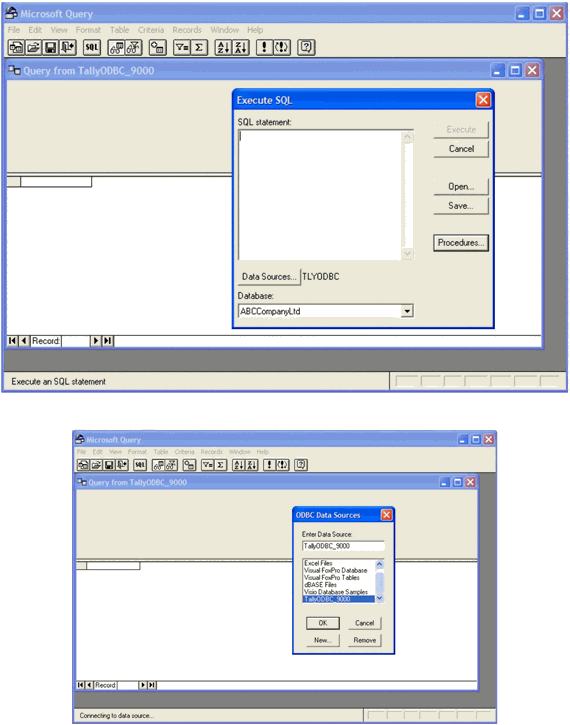
Have you installed an actual SQLite ODBC driver? If so, which one ( Ex1, Ex2. I just need to submit some query inside sqlite, unfortunately i don't know very well the difference beetwen using or not odbc. Like the screenshot attached sqlite3 odbc datasource. Here's a pretty decent example.ĭirector, Partner Integrations for Digital Exchange Otherwise, you might try looking at some of the other SQLite providers available on the internet. We can probably put one together, but it may take a few days to get to it. If you want to stick with ODBC, you'll have to set up your own code stages to work with the objects as it appears we don't have an ODBC VBO on the DX.
#Sqlite3 odbc driver
When I ran a quick test of this using the 64-bit ODBC driver referenced in your image I received an exception related to this. Some constituent parts are still based on 32-bit libraries. Blue Prism is not a fully 64-bit application.
#Sqlite3 odbc install
Furthermore, I believe you will need to install the 32-bit versions of those SQLite ODBC drivers. I think you would actually need to leverage the objects in the namespace to make this work. First, I don't think the OLEDB provider will be able to work with this ODBC connection.
#Sqlite3 odbc update
foo VARCHAR(10)) and the field contents contains more characters than the field definition (which SQLite allows) MS-Access will also barf when trying to update any of the fields on that row.There are a few things working against you here I think. If you have any text fields with a defined length (e.g. With an empty DATETIME field, I can add a time of 01-01-2014 12:01:02 via Access's datasheet view, if I then look at the value in SQLite the seconds have been rounded off: sqlite> SELECT three from TEST where FLoc='1020' I confirmed it's a number conversion issue. (And of course SQLite doesn't have a real DATETIME field type anyway so TEXT is just fine and will convert OK) So now any DATETIME fields I need in SQLite, I declare as VARCHAR(19) so they some into Access via ODBC as text. I removed the DATETIME field and I was able to update record values in MS-Access datasheet view. After lots of testing I found the issue was with a DATETIME field I had in the table. I have a table with a primary key on a VARCHAR(30) (TEXT) field.Īdding an INTEGER PRIMARY KEY column didn't help at all. You can create a unique index on (what are currently) the first four columns to ensure that they remain unique, but the new new "identity" (ROWID) column is what Access would use to identify rows for CRUD operations. One possible workaround would be to create a new SQLite table with all the same columns plus a new INTEGER PRIMARY KEY column which Access will "see" as AutoNumber. The solution in this case was the following: Try setting your Sync.Mode to NORMAL and see if that makes a difference.

The only difference I can see between my setup and yours (apart from the fact that I am on 32-bit and you are on 64-bit) is that in the ODBC DSN settings I left the Sync.Mode setting at its default value of NORMAL, whereas yours appears to be set to OFF.

When I opened the linked table in Datasheet View I was able to add, edit, and delete records without incident. I created an Access linked table and when prompted I chose both columns ( and ) as the Primary Key. I created and populated the test table as documented here. I used the following on my 32-bit test VM: My initial attempt to recreate your issue was unsuccessful.


 0 kommentar(er)
0 kommentar(er)
